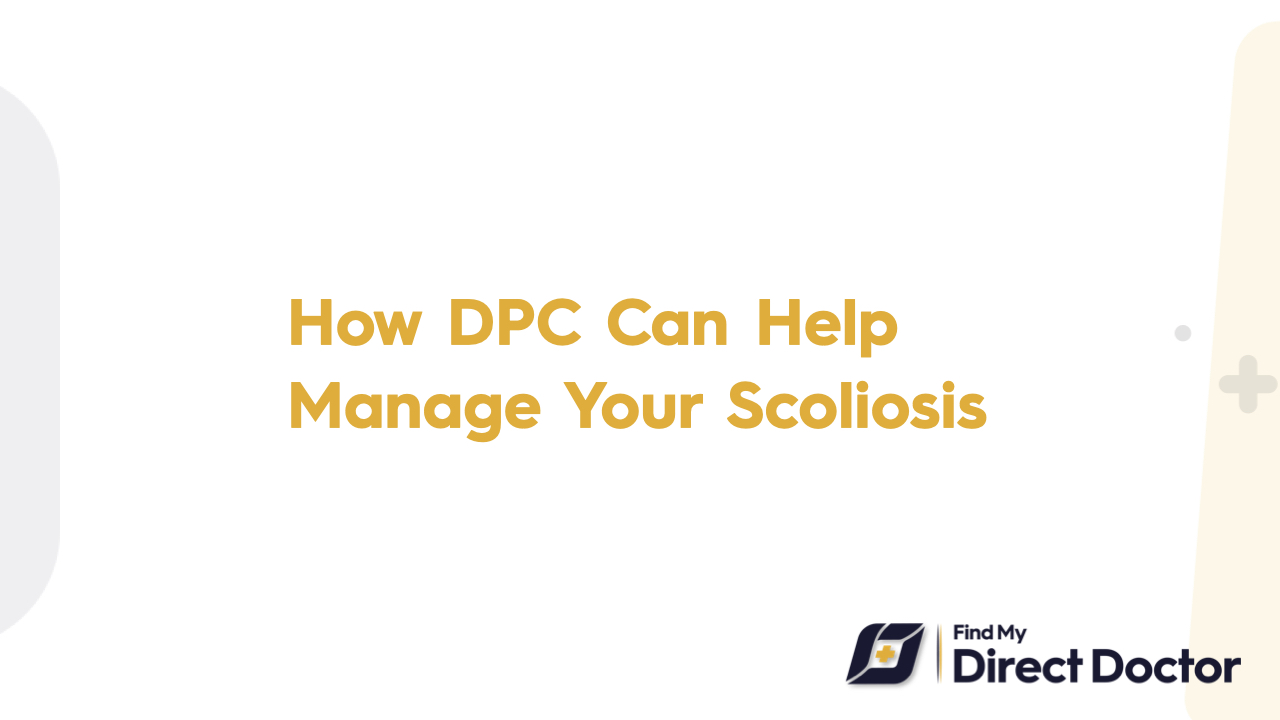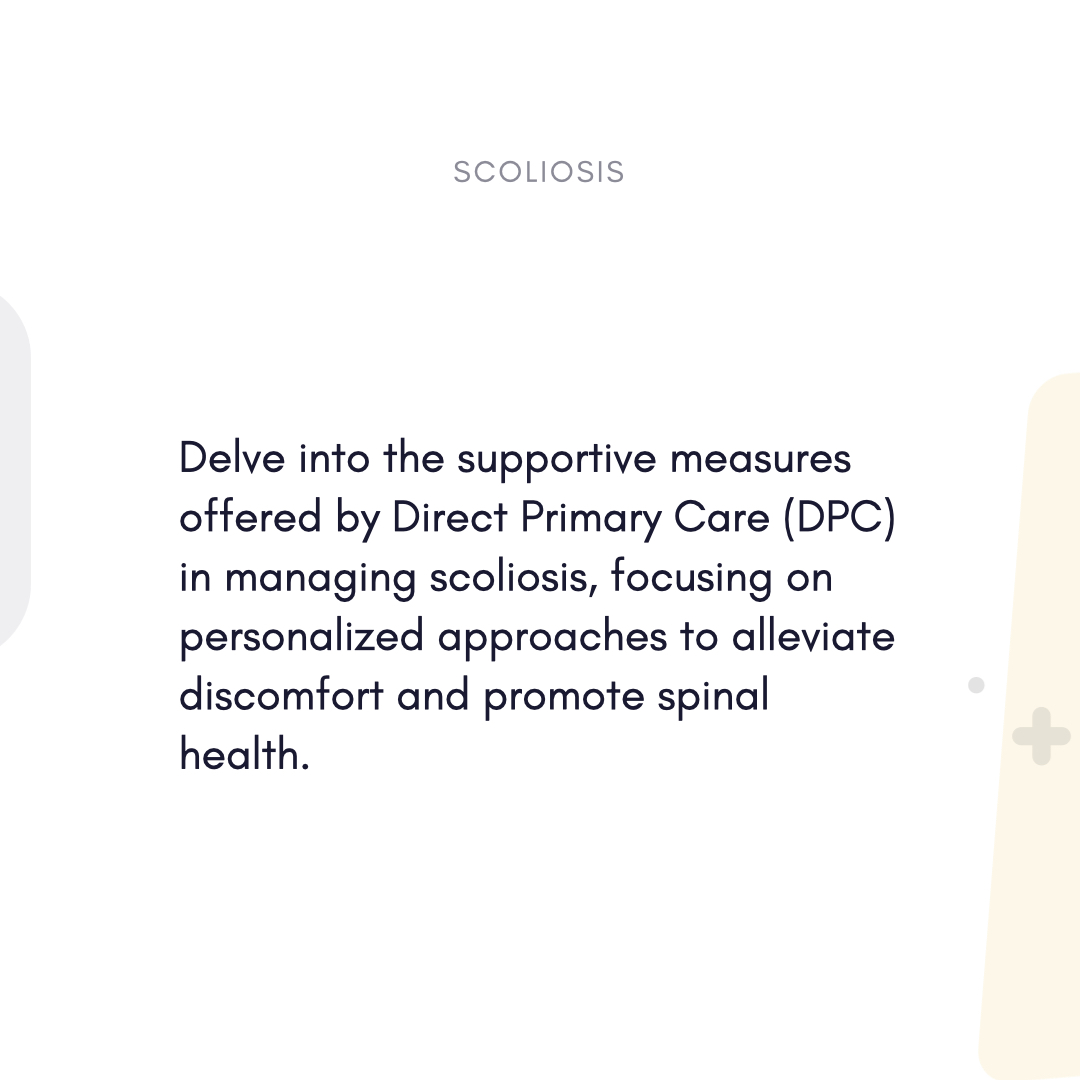Scoliosis and Direct Primary Care (DPC): Your Partner in Personalized, Proactive Care
A curving spine compromising posture and breathing. One feels that surgery is inevitable. For 6–9 million Americans with scoliosis, this spinal defect causes more than just a cosmetic issue; untreated, it causes pain and handicap. While traditional treatment occasionally delays bracing or skips monitoring, Direct Primary Care (DPC) provides proactive, patient-centered treatment to straighten curves and restore confidence.

Understanding Scoliosis: Identification
Classed as a lateral spine curvature >10 degrees, scoliosis is:
- Idiopathic (beginning in adolescence, eighty percent of cases)
- Born, degenerative, or neuromuscular?
- Strength of levels: Mild (<25°), moderate (25–45°), severe (>45°)
Treatable hazards
- Lowered lung capacity and ongoing back pain
- Advancement in adulthood (degenerative cases)
Early intervention and surveillance advised by the Scoliosis Research Society
Dpc Affects Scoliosis Treatment: Changes in Care
Usually running on a membership model between 50 USD and 150 USD per month, Direct Primary Care (DPC) offers unlimited access to your doctor for a set charge. For those with scoliosis, this translates into no co-pays, no delays in referrals, and a treatment plan exactly matched your Cobb angle.
One early monitoring and detection tool is
The readily available DPC model guarantees:
- Same-day evaluations for back pain or posture corrections.
- During routine visits, in-office scoliometer tests.
- Reasonably priced images: standing X-rays at decided upon cash rates.
2. Customized, Guideline-Based Approach
DPC doctors create tailored plans compliant with SOSORT guidelines:
- Yoga, Schroth treatment, core strengthening, moderate curves.
- Moderate curves are made possible by custom Boston braces created with 3D scanning.
- Extreme curvatures: coordination with orthopedic surgeons.
3. All around, reasonably priced help
DPC reduces both physical and financial load by:
- Cutting costs—braces at 1,500 USD instead of 5,000 USD+ with insurance mark-ups.
- 24/7 telehealth access lets one handle questions on exercise or brace discomfort.
- Integration of mental health: body image problems therapy
DPC's benefits for scoliosis sufferers
1. Unmatched Availability
- 24-hour consultations during high progression risk growth spurts.
- None of the PT or X-ray referral wait times.
2. Customized Treatments
- Referrals for teenagers' growth-friendly Vertebral Body Tethering (VBT).
- Adults: pain management based on spinal injections or NSAIDs.
3. Open and reasonable expenditure
- Membership consists in consultations, screenings, and care coordination.
- Typical savings: by avoiding ER visits and specialist co-pays, 3,000 USD+ annually.
Individual Stories of Personal Success from Real Life
- Case 1: Emma, 14, reduced her 28° curve to 18° by DPC's Schroth treatment and bracing. Prevented running.
- Case 2: John, 62, with degenerative scoliosis, restored mobility using DPC's aquatic therapy and pain management.
Find out about DPC and scoliosis.
- Q: Can DPC handle surgical cases?
- A: Absolutely. Working with orthopedic surgeons, DPC supervises post-operative rehabilitation.
- Q: Is DPC reasonable without insurance?
- A: Sure. Members avoid charges of 10,000 USD+ for surgical facilities and save on braces.
- Q: Given family scoliosis, what about genetic testing?
- A: A DPC arranges tests for siblings who run a risk to ensure cash-pay discounts.
Why DPC Helps Scoliosis Patients?
Stressing DPC's congruence with scoliosis recommendations, the American Academy of Orthopaedic Surgeons supports:
- Matching treatments to type of curve and progression risk helps to ensure precision.
- Tools to track exercise adherence and posture help empower you.
- Trust: An ordered care team replaces sporadic visits.
Straighten Your Spine, Create Your Future.
Scoliosis need not define your options. Using DPC counts every degree; you get a partner who watches closely, intervenes early, and walks with you toward a straighter, stronger spine.






